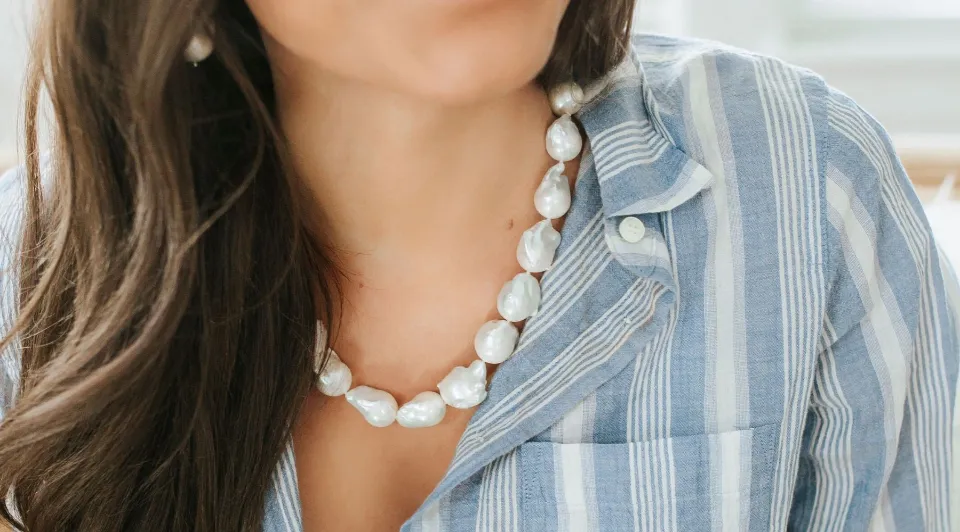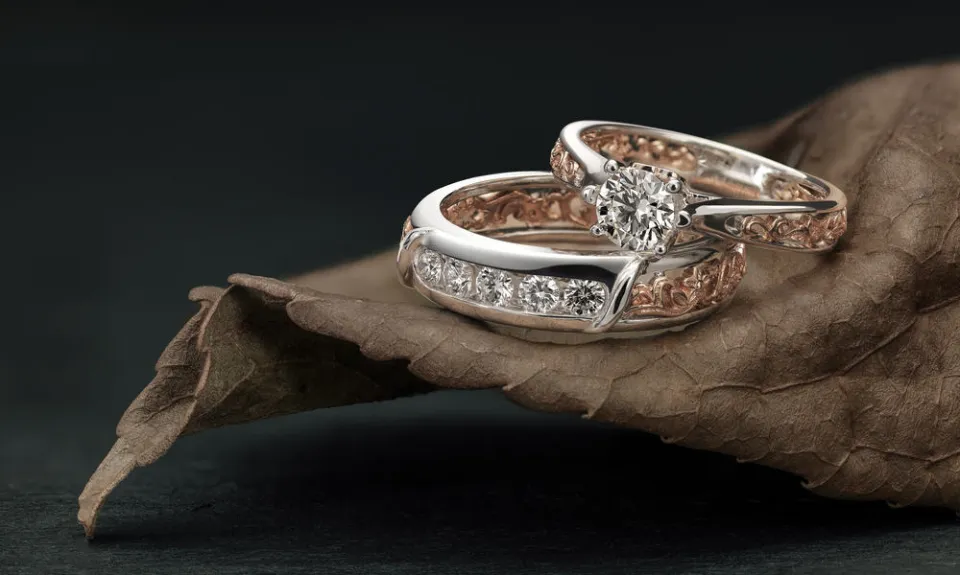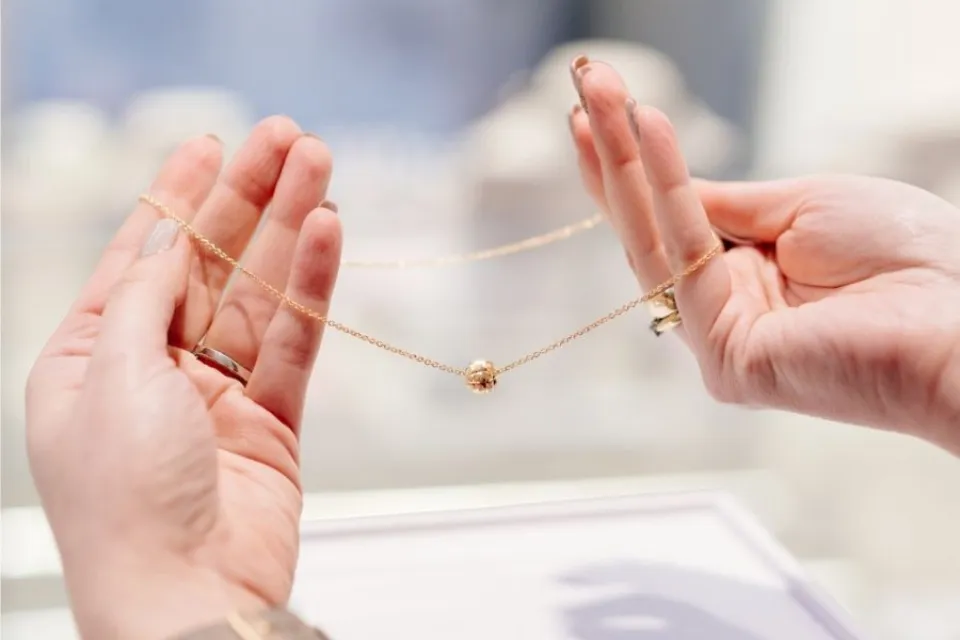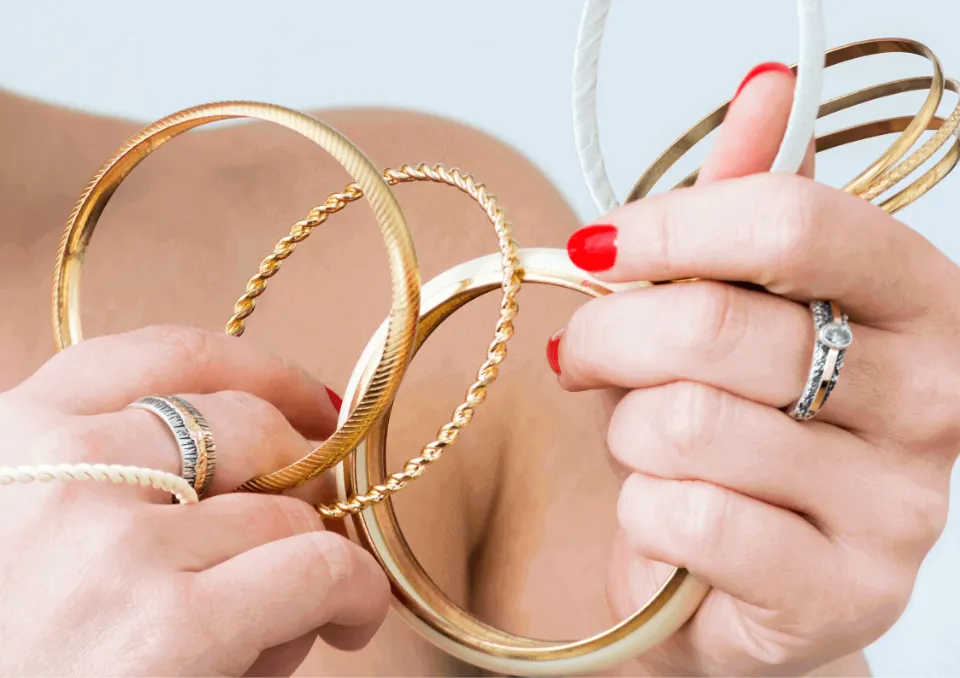For their inherent luster and iridescent beauty, pearls have been prized for more than 6,000 years. Do you know what is a pearl necklace?
A pearl necklace is a classic jewelry item that has been popular for centuries. It is an eye-catching piece of jewelry, often featuring natural or cultured pearls strung together on a line.
Let’s learn more about this cherished piece of jewelry’s past and significance.
What is a Pearl Necklace?
In the simplest terms, a pearl necklace is a series of pearls strung together, usually worn around the neck.
Although its precise origin is unknown, it is thought that the pearl necklace first became common in ancient Rome.
The Romans were known for their love of luxury and would adorn themselves with pearls and other precious gems.
Related Post: Are Pearl Necklaces in Style?
What Does a Pearl Necklace Symbolize?

In Western culture, pearl necklaces are traditionally associated with wealth and sophistication. The necklace was frequently a must-have for women in high society, and it was prominently displayed in the clothing of well-known historical figures like Cleopatra.
For special occasions like weddings, anniversaries, and graduations, pearl necklaces have grown in popularity over time.
For special occasions like weddings, anniversaries, and graduations, pearl necklaces have grown in popularity over time.
In addition to aesthetic appeal, pearl necklaces also have important symbolic meanings. Pearls are revered as a representation of femininity, wisdom, and purity in numerous cultures.
Wearing a pearl necklace was thought to bring good luck in ancient China because it was thought that pearls were created from dragons’ tears.
Pearls are revered as a protective talisman in Hinduism that fosters harmony and prosperity by warding off evil spirits.
Types of Pearls Necklaces
Pearl necklaces are a timeless piece of pearl jewelry that never goes out of style. There is a pearl to suit every taste and budget thanks to the wide variety of pearls available. Natural pearls come in a variety of shades, sizes, and shapes, whereas cultured pearls are produced by irrigating an oyster or a mussel.
Freshwater pearls come from mussels and have more irregular shapes than others, while Larger and more lustrous pearls include akoya and South Sea varieties. Tahitian pearls are more uncommon than other types and have stunning dark hues that range from black to grey to greenish-blue.
Pearl necklaces can be made in single-strand or multi-strand styles and strung together on metals like gold or silver.
Therefore, whether you’re looking for a traditional strand of white or cream-colored pearls or something more exotic like black Tahitians, there is bound to be something perfect!
How to Tell If Pearls Are Real Or Fake?
With these easy tests, you will be able to tell real pearls from fake ones in no time.
Inspecting the Pearl Surface
Small flaws are the first characteristic of a genuine pearl. Real pearls will have some blemishes, like tiny bumps or pits on the surface, and no two pearls will appear identical when compared side-by-side.
All of these imperfections are normal growth characteristics of genuine pearls and are a great sign of pearl quality.
Even the world’s most exquisite pearls will have flaws, though they will be very minor in high-quality pearls. Every pearl is different because of this.
The Tooth Test
One very simple way to tell if a pearl is real is by lightly rubbing it against the biting edge of a tooth.
Genuine pearls have a sandy, grittier, or slightly rougher texture. Smooth and glassy is how you can tell a fake pearl.
The Vinegar Test
In this test, vinegar is used to tell real pearls apart from fake ones. The procedure for this test is once more very straightforward: either you place a drop of vinegar on a pearl or immerse it in vinegar.
A genuine pearl will either dissolve in vinegar or erode where the drop of vinegar touches the surface. This is as a result of the chemical reaction between calcium carbonate, the main component of a real pearl, and the acid in the vinegar.
Depending on how much vinegar is present, this chemical reaction will proceed more quickly. Undiluted vinegar will cause the pearl to dissolve or erode more quickly than vinegar that has been diluted with water.
Since it won’t experience the same chemical reaction as a real pearl, a fake pearl won’t be harmed by this test.
Caring for Pearl Necklace
Caring for pearl necklaces is important to maintain their beauty and luster. Cleaning pearl necklaces with a soft, damp cloth on a regular basis is crucial to maintaining their best appearance. The delicate surface of the pearl can be harmed by using abrasive detergents or solvents, so avoid using them.
Additionally, to avoid scratching the surface of the pearl, always store pearls in a box or pouch lined with a soft material, like silk or velvet.
When wearing your pearl necklace, be aware of lotions, perfumes, and hairspray that may come into contact with them; these substances can dull or damage the pearls over time.
Last but not least, you should keep your pearl necklace out of extreme heat and sunlight when not wearing it.
You can prolong the beauty of your pearls for years by following these tips.
How to Choose a Pearl Necklace?
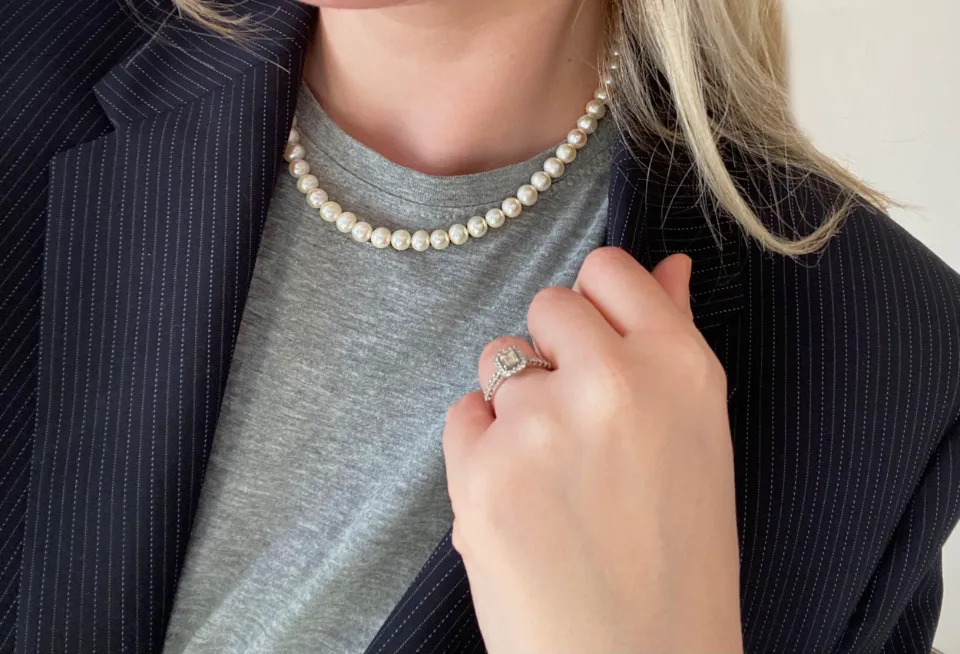
When shopping for a pearl necklace, there are a few key factors to keep in mind.
Take into account the type of pearl first. Akoya, Tahitian, and South Sea pearls are just a few of the numerous varieties of pearls.
It’s important to do your research and select the type of pearl that best suits your style and budget because each type of pearl has its own distinctive qualities and price range.
When looking for a pearl necklace, the necklace’s length is an additional important factor to take into account.
Pearl necklaces come in a variety of lengths, from chokers close to the collarbone to long, flowing chains that drop down to the waist.
Your personal style and the event you plan to wear it to will have a big impact on the length of the necklace you select.
Cost and Investment in Pearl Necklaces
Pearl necklaces are timeless and classic pieces of jewelry. They can be bought in a variety of designs that range from being very affordable to being very expensive.
If cared for and maintained properly, a pearl necklace’s beauty and quality can last for years or even decades, making the investment frequently worthwhile.
You can select freshwater or saltwater pearls in a variety of forms, sizes, and hues, depending on your budget.
The cost of the pearl necklace will depend on the type of pearl used, its lustre and its size.
Investing in an Akoya or South Sea pearl necklace may be the best option if you’re looking for a piece of heirloom quality that will be handed down through the generations.
Freshwater pearls are a fantastic choice for those searching for something more reasonably priced because they are available in a variety of sizes and are less expensive.
Summary: What is a Pearl Necklace
In conclusion, a pearl necklace is a timeless and elegant piece of jewelry that has been worn by women of all cultures and backgrounds for centuries.
Pearl necklaces are a lovely and significant option whether you’re looking to add a touch of sophistication to your everyday wardrobe or searching for the ideal gift for a loved one.
With so many styles and types of pearls to choose from, there is a pearl necklace for everyone.
FAQs
What is a Pearl Made Of?
A pearl is made of calcium carbonate, which has formed in concentric layers and is primarily found as the mineral aragonite or a combination of aragonite and calcite.
What Do Pearls Symbolize in a Woman?
Powerful women have worn pearls for centuries to convey elegance and sophistication.
Is It Feminine to Wear a Pearl Necklace?
Pearls have been linked to feminine energy for many years. But recently, pearls have been seen in a more masculine light representing strength and stability.

